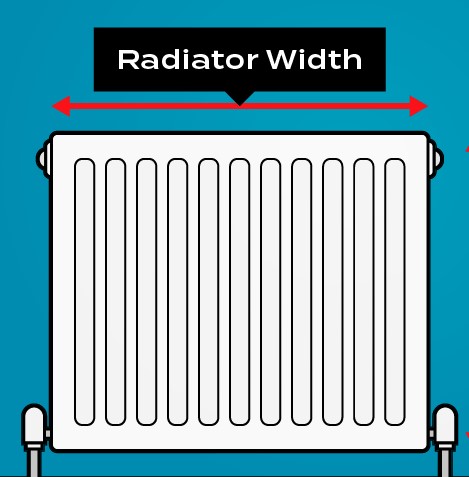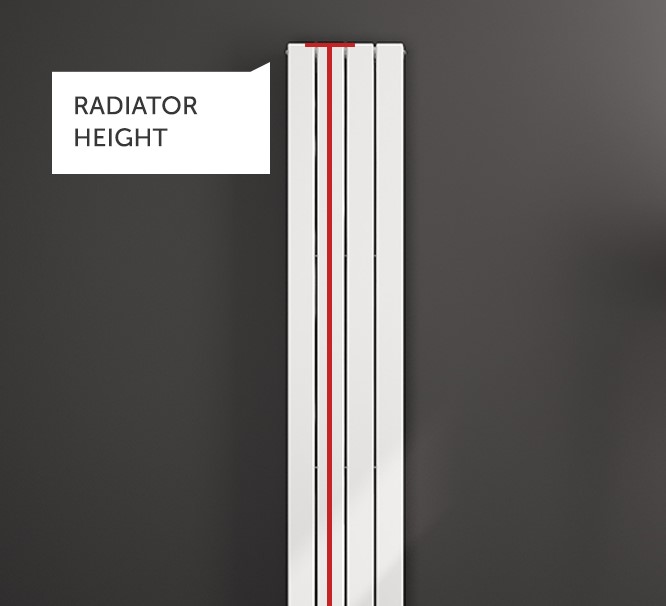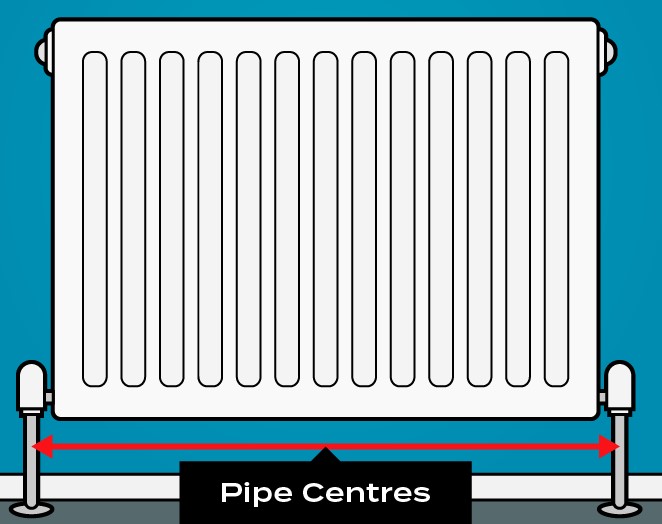Keeping your home warm and comfortable relies heavily on efficient radiators. When a radiator needs replacing, getting the correct size is crucial for optimal heat output and seamless aesthetic integration.
Accurately measuring your radiator is essential for various reasons, whether replacing an old one, upgrading to a more efficient model, or fitting a radiator cover. Correct measurements ensure the new radiator fits perfectly and functions optimally, saving you from unnecessary hassle and expense.
In the UK, radiator measurements are typically given in millimeters (mm), and knowing how to measure yours accurately ensures a smooth replacement process. This guide will walk you through measuring your radiator, offering valuable tips for a precise fit.
Why Measure Your Radiator?
Before diving into the measurement process, let’s understand why it’s so important. Here are some key reasons:
- Compatibility: Replacing a radiator requires finding a suitable substitute with dimensions that match your existing pipework and space. Incorrect measurements can lead to a replacement radiator that’s too large or small, impacting heat distribution and aesthetics.
- Efficiency: The size of your radiator directly affects its heat output capacity. Getting the right size ensures your radiator can adequately heat the room without being oversized and wasting energy.
- Aesthetics: A well-sized radiator complements the room’s proportions. A radiator that’s too big can overpower the space, while a small one might leave a gap and appear awkward.
Tools and Materials Needed
Before you start, gather the necessary tools and materials:
- Tape Measure: A reliable tape measure is crucial for accurate measurements.
- Notepad and Pen: To jot down your measurements.
- Level (optional): Useful for ensuring your radiator is level.
- Assistance (if needed): For larger radiators, having someone to help can make the process easier.
Step-by-Step Guide to Measuring a Radiator
There are three main aspects to consider when measuring your radiator:
Width:
The width refers to the horizontal distance across the front of your radiator. Here’s how to measure it accurately:
- Gather your tools: You’ll need a metal tape measure for better accuracy compared to a plastic one.
- Locate the furthest points: Identify the two furthest points on the front of your radiator, excluding any valves, controls, or protruding parts.
- Measure the distance: Extend your tape measure from one of the furthest points to the other, ensuring it’s flat against the radiator’s surface. Record the measurement in millimeters (mm).
- Double-check: Take multiple measurements, especially on wider radiators, to ensure accuracy. Note the lowest reading as your final width measurement.

Image source: bestheating.com
Height:
The height represents the vertical distance of your radiator. Here’s how to measure it:
- Locate the bottom and top: Identify the lowest point on the base of your radiator and the highest point on its top.
- Measure the distance: Extend your tape measure vertically from the bottom point to the highest point. Ensure the tape measure is flat against the radiator’s surface. Record the measurement in millimeters (mm).
- Double-check: Take multiple measurements, especially on taller radiators, to ensure accuracy. Note the highest reading as your final height measurement.

Image source: onlyradiators
Pipe Centres :
Pipe centres are the distance between the centre points of the two pipes that connect your radiator to the heating system. This measurement is crucial if you’re replacing your radiator and want to ensure a perfect fit with your existing pipework. Here’s how to measure it:
- Locate the inlets: Identify the two inlets (usually on opposite sides) where the pipes connect to your radiator.
- Find the centre: Locate the exact centre of each pipe inlet.
- Measure the distance: Extend your tape measure from the centre of one pipe inlet to the centre of the other pipe inlet. Ensure the tape measure is level. Record the measurement in millimeters (mm).

Image source: bestheating.com
Considerations for Different Room Types
Living Room
Living rooms often require larger radiators to heat a bigger space. Consider the height, width, and depth carefully to ensure sufficient heating capacity.
Bathroom
In bathrooms, towel radiators are common. Pay special attention to width and height to accommodate hanging towels without obstructing other fixtures.
Bedroom
Bedrooms typically require radiators that fit under windows or along walls without taking up too much space. Ensure quiet operation models if noise is a concern.
Kitchen
Kitchens may have limited wall space due to cabinets and appliances. Consider vertical radiators to make the best use of available space.
Common Mistakes and How to Avoid Them
Incorrect Measurement Points
Ensure you measure from the correct points on the radiator. Always include the end caps and valves in your measurements.
Ignoring Valve and Pipe Positions
Ensure that your measurements account for the position of existing valves and pipes. Misalignment can cause significant installation problems.
Not Accounting for Wall Skirting and Obstructions
Consider any skirting boards or other obstructions that might affect the fit of the radiator. Measure the space above the skirting or other features to ensure an accurate fit.
Converting Measurements for Different Radiator Sizes
Metric to Imperial Conversions
In the UK, radiators are often measured in millimeters. If you need to convert to inches:
- 1 inch = 25.4 mm Use this conversion to ensure compatibility with various radiator specifications.
Standard Radiator Sizes in the UK
Familiarize yourself with standard radiator sizes to make the selection process easier. Common sizes include:
- Height: 300mm, 400mm, 500mm, 600mm, 700mm
- Width: 400mm, 500mm, 600mm, 800mm, 1000mm
When to Seek Professional Help
Complex Installations
For intricate installations or when dealing with non-standard pipework, professional help is advisable.
Custom Radiator Designs
Custom radiators often require precise measurements and professional installation to ensure they fit and function correctly.
Installation and Safety Concerns
If you’re not confident in your DIY skills or if safety is a concern, hiring a professional ensures the job is done correctly and safely.
Conclusion
By following these steps and tips, you can accurately measure your radiator’s width, height, and (if needed) pipe centres. With these measurements in hand, you can confidently search for a replacement radiator that perfectly fits your existing space and heating system.
Remember, a well-sized radiator contributes to optimal heat distribution, energy efficiency, and a visually pleasing aesthetic in your home.
Frequently Asked Questions (FAQs)
To measure the size of a radiator, you need to determine its height, width, and depth:
Height: Measure from the bottom to the top of the radiator.
Width: Measure from one side to the other.
Depth: Measure from the front of the radiator to the back (or the wall if it’s mounted).
To measure a car radiator, follow these steps:
Height: Measure the radiator core from top to bottom, excluding the tanks.
Width: Measure the core from side to side.
Thickness: Measure the depth of the core from front to back.
Standard radiator sizes often vary, but common dimensions include:
Height: 300mm, 400mm, 500mm, 600mm, 700mm
Width: 400mm, 500mm, 600mm, 800mm, 1000mm
Depth: Typically between 70mm to 160mm, depending on the type and model.
In the UK, the average radiator size typically found in homes is around:
Height: 600mm
Width: 1000mm
Depth: 100mm (though this can vary based on the type of radiator and its design).
